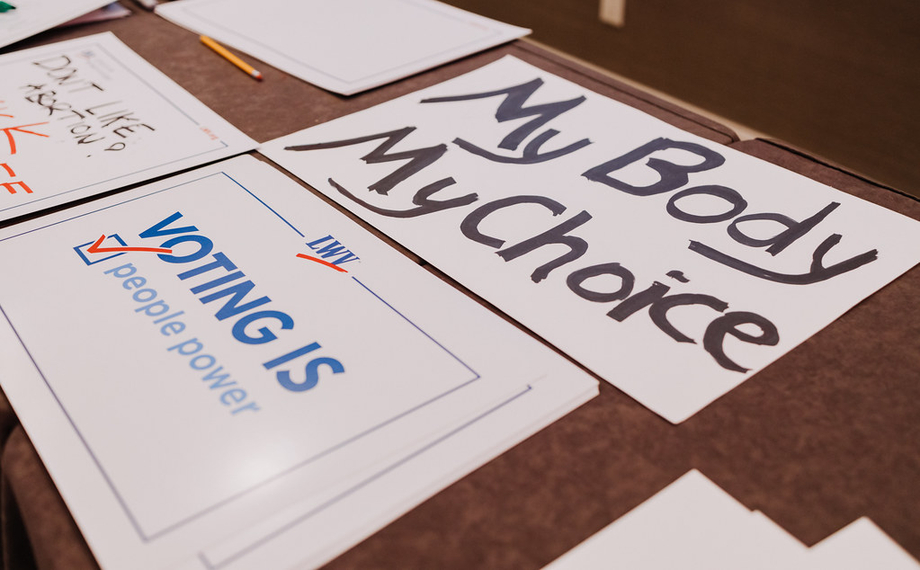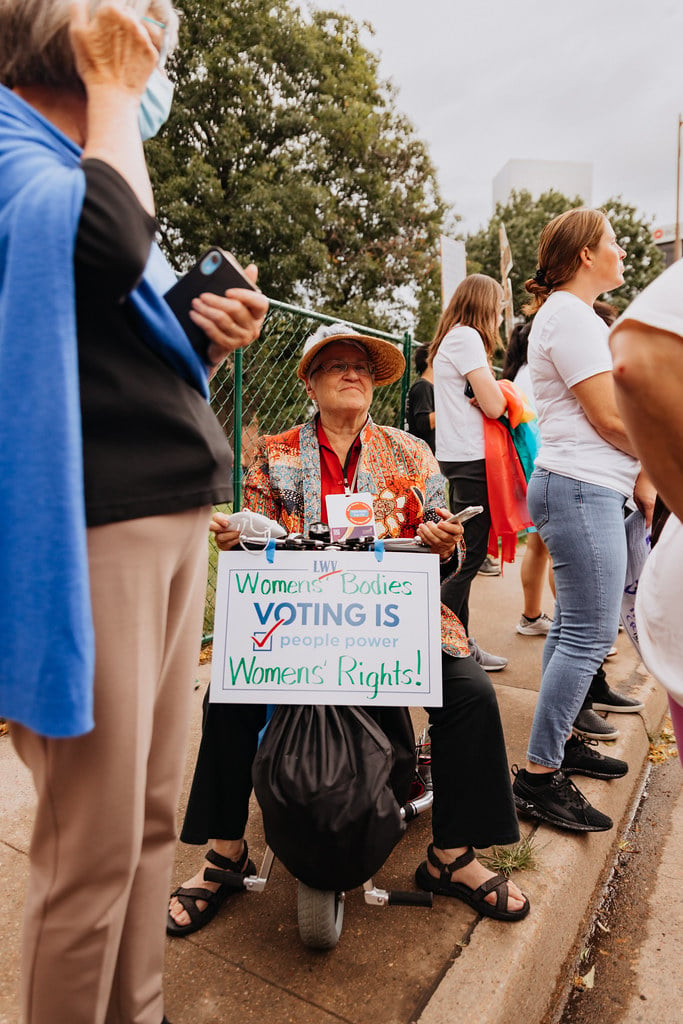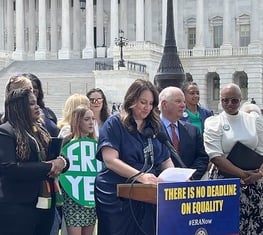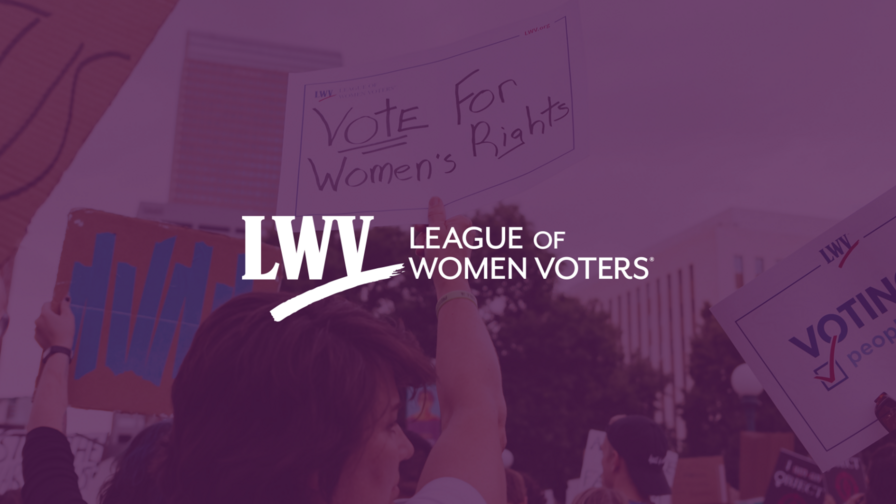Abortion Rights and Access One Year After Dobbs
Content warning: rape and incest.
Note: This blog was produced for the one-year anniversary of Dobbs. The state legislative landscape is rapidly changing, so sources may reflect updated numbers.
In June 2022, the US Supreme Court ruled in Dobbs v. Jackson Women’s Health Organization, ending the federal constitutional right to abortion. This ruling eliminated a fundamental right that women and people who may become pregnant held for nearly fifty years and left the right to abortion up to federal and state legislation.
One year after Dobbs, 20 states are enforcing more limited abortion bans than before the ruling, including 14 states that have banned abortion at conception. Additionally, many have implemented other restrictions that make abortion less accessible. Today in the US, an estimated 22 million people who can become pregnant live in states where abortion access is heavily restricted or totally inaccessible.
The Federal Right to Abortion
In 1973, the US Supreme Court ruled in Roe v. Wade that an individual has the constitutional right to have an abortion without state interference before a fetus is likely to survive on its own. Then, in 1992, the Court ruled in Planned Parenthood of the Southeastern Pennsylvania v. Casey, upholding Roe but adding that states can implement abortion restrictions if they do not impose an “undue burden” on the individual seeking abortion services, paving the way for states to restrict abortion further.

On June 24, 2022, the Supreme Court released its decision in Dobbs v. Jackson Women’s Health Organization, overruling Roe and Casey and overturning the federal constitutional right to abortion. The ruling left it to federal and state legislation to determine the right and access to abortion care. Following the decision, the US House of Representatives passed legislation, the Women’s Health Protection Act, to codify an individual’s right to receive, and a health care provider’s right to provide, abortion services — but the Senate failed to pass it. As such, since the decision, many state legislatures have passed laws to prohibit, restrict, or protect the right and access to abortion.
Abortion Bans Pre- and Post-Dobbs
As of January 2022, before the Dobbs decision, 19 states had in effect pre-viability bans, banning abortion before a fetus is likely to survive on its own. These bans were set at varying times throughout pregnancy, including one as early as six weeks since the last menstrual period (LMP), one at 20 weeks LMP, and 17 at 20-22 weeks LMP.
As of June 2023, one year after Dobbs, 25 states have pre-viability bans in effect: 14 at conception with very limited exceptions, one at six weeks LMP, one at 12 weeks LMP, three at 15-18 weeks LMP, and six at 20-22 weeks LMP. All state abortion bans have an exception to prevent the death of the pregnant person, and some have additional exceptions, such as when there is a severe risk to the health of the pregnant person, when the pregnancy is a result of rape or incest, or when there is a fetal anomaly. Bans and their “exceptions” have often caused confusion about what is permitted under law, sometimes leading to delays in vital care.
Abortion bans often have criminal penalties for individuals who perform abortions against the law, including potential prison time ranging from one year to life, fines up to $100,000, and loss of medical or professional licenses. Some bans also include civil penalties, and a few allow civilians to sue abortion providers and/or people who help others obtain an abortion.
Abortion Restrictions Post-Dobbs
In addition to abortion bans, there are a multitude of abortion restrictions that limit access, including medically unnecessary:
-
Clinician and facility requirements;
-
Mandated counseling, waiting periods, and/or ultrasounds; and
-
Restrictions on medication abortion, reducing access to this safe and effective abortion method that accounts for more than half of all US abortions.
There are also private insurance and public funding restrictions that make abortions even more financially inaccessible. Using federal and state funds, Medicaid provides health care coverage to individuals with low incomes, including more than 16 million women of reproductive age. The Hyde Amendment bans the use of federal Medicaid funds to pay for abortions except when the pregnancy results from rape or incest or abortion is necessary to save the life of a pregnant person. States may use their own funds to cover other medically necessary abortions — however, only 17 states pay for all or most medically necessary abortions, and one state (South Dakota) denies required federal coverage.

Abortion Protections Post-Dobbs
One year after Dobbs, at least 18 states have passed laws to protect the right and access to abortion, including laws that:
-
Clarify and strengthen existing reproductive health care protections;
-
Protect people who provide, support, or seek abortion services from out-of-state penalties;
-
Expand the pool of clinicians qualified to provide abortion care;
-
Protect or expand access to medication abortion; and
-
Make abortion more affordable by requiring insurance plans to cover abortion services without cost-sharing and/or by establishing state funds to help cover abortion care costs.
Consequences of Dobbs
Abortion bans and restrictions disproportionately affect underserved and historically marginalized communities, compounding existing racial and economic inequities, including disproportionate barriers to quality and accessible health care. This includes Black, Indigenous, and other people of color, individuals with low incomes, members of the LGBTQIA+ community, people with disabilities, people living in rural areas, and immigrants.
A recently updated study estimates that banning abortion nationwide would lead to a 24% increase in pregnancy-related deaths overall and a 39% increase among Black people.
How You Can Take Action
The League of Women Voters believes that public policy must affirm the right of privacy of the individual to make reproductive choices and that every US resident should have access to a basic level of quality health care at an affordable cost. Without the ability to make reproductive decisions for one’s own body, women and those who can become pregnant cannot participate equitably in our democracy.
At the end of 2021 and in 2022, the League took numerous actions to support federal protections for the right to make reproductive choices, including educating on the impact of state reproductive rights ballot measures. LWV will continue to serve as an ally to our reproductive rights partners and a resource for state Leagues advocating against harmful, and in support of protective, state-level legislative measures to ensure access to safe and legal abortion services.
To take action at home:
-
Follow the League of Women Voters’ materials and work on reproductive rights;
-
Support reproductive rights organizations and abortion funds across the nation, such as Planned Parenthood or your local abortion fund;
-
Join your local League to learn about and support efforts to protect and expand access to reproductive choices in your area;
-
Help destigmatize reproductive health care by sharing your story, or uplifting the stories of people who would like to share.
The Latest from the League
One year ago today, the Supreme Court of the US took away our right to bodily autonomy.
LWV President Dr. Deborah Turner launches her three-part blog series about the impact of Dobbs and other anti-abortion legislation with a look at the medical impact of anti-abortion laws.
Last year’s SCOTUS decision repealing the right to abortion continues to affect millions of people nationwide. Yet while most of us are familiar with its impact on family planning, I wonder if we all understand the full repercussions on every aspect of our lives?
In June 2022, the US Supreme Court ruled in Dobbs v. Jackson Women’s Health Organization, overturning Roe v. Wade and Planned Parenthood v. Casey and ending the federal constitutional right to abortion. As the Supreme Court no longer recognizes the right to abortion as protected by the US Constitution, this ruling makes state constitutional amendments even more significant, leaving the right to abortion up to federal or state laws.
Sign Up For Email
Keep up with the League. Receive emails to your inbox!
Donate to support our work
to empower voters and defend democracy.






